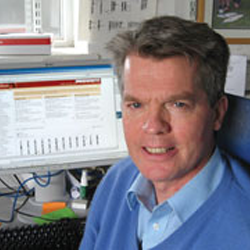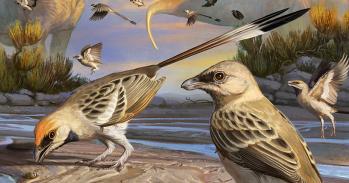
Cambridge BioResource provides a new approach to understanding why some of us suffer from certain common diseases while others don't.
Cambridge BioResource provides a new approach to understanding why some of us suffer from certain common diseases while others don't.
Cambridge BioResource has taken an innovative and highly efficient approach to facilitating disease-specific studies that are based on studying normal characteristics of healthy individuals.
Not everyone reacts in the same way to the challenges of a modern lifestyle. The incidence of common conditions such as heart disease and obesity, and immune-mediated diseases such as allergy, asthma, inflammatory bowel disease and type 1 diabetes, is on the increase. Some 20 million people in the UK are said to be living with some form of chronic disease, which presents a significant cost burden to the UK’s economy and healthcare system, and has a major impact on quality of life.
Recent advances have elucidated how genes and their natural variants influence susceptibility to common diseases. But our understanding of the links between disease susceptibility, genetic make-up (genotype), how genes affect the characteristics of individuals (phenotype), and what the impact is of environmental effects such as our lifestyle choices, has lagged behind. One solution to the challenge of identifying gene functions and their altered effects due to common gene variants is to study healthy individuals from the general population.
The Cambridge BioResource, located on the Cambridge Biomedical Campus, has been designed specifically for this purpose. Set up in 2004 as a joint collaboration between the University of Cambridge and the Medical Research Council (MRC) Epidemiology Unit, Cambridge BioResource has taken an innovative and highly efficient approach to facilitating disease-specific studies that are based on studying normal characteristics of healthy individuals.
One-stop shop
The Cambridge BioResource has established a resource of volunteers (phase 1) from the Cambridge area who are willing to be approached and invited to participate in a wide variety of local medical research studies (phase 2 studies). Through collaboration with the National Health Service Blood and Transplant Centre, Cambridge BioResource now has over 9,000 members on its volunteer panel. Selection for phase 2 studies is based on the volunteer’s genotype, determined from DNA isolated from their blood or saliva sample taken as part of their recruitment. Each phase 2 study has its own specific selection criteria that are used by the Cambridge BioResource team to screen the bank and approach those volunteers who match. Volunteers are free to decide whether or not they wish to take part in the ensuing study and are approached a maximum of four times each year.
 In this way, the resource provides something of a ‘one-stop shop’ for any study that requires the analysis of a cohort of individuals selected from a large cross-section of the general population: a researcher studying a specific disease is essentially provided with a bespoke bank of samples that correspond to precisely the subset of the population they need to study. This allows much more powerful and cost-effective analyses of genotype–phenotype associations by normalising as many features of the analysis as possible. It also does away with the need for each research study to conduct its own costly and time-consuming recruitment of volunteers.
In this way, the resource provides something of a ‘one-stop shop’ for any study that requires the analysis of a cohort of individuals selected from a large cross-section of the general population: a researcher studying a specific disease is essentially provided with a bespoke bank of samples that correspond to precisely the subset of the population they need to study. This allows much more powerful and cost-effective analyses of genotype–phenotype associations by normalising as many features of the analysis as possible. It also does away with the need for each research study to conduct its own costly and time-consuming recruitment of volunteers.
Facilitating research
The Cambridge BioResource has grown into an invaluable facility that is being utilised by several research groups:
- Professors John Todd, David Clayton and Linda Wicker at the Cambridge Institute for Medical Research are using blood samples to determine the functions of the genes that cause type 1 diabetes (see below).
- Dr David Savage, Dr Sadaf Farooqi, Professor Steve O’Rahilly, Professor Nick Wareham and Dr Francis Finucane at the Institute of Metabolic Science are aiming to improve our understanding of how genetic variants alter body-weight regulation and diabetes risk.
- Dr Willem Ouwehand at the Department of Haematology is analysing the genes and mechanisms involved in cardiovascular disease.
- Dr Andy Calder at the MRC Cognition and Brain Sciences Unit (CBSU) is using functional magnetic resonance imaging (fMRI) to determine what genetic factors affect the neural coding of emotional signals in the brain.
- Dr Adrian Owen at the MRC CBSU is using fMRI to understand conditions such as Parkinson’s disease and obsessive–compulsive disorder.
Towards 10K and beyond
Funding until March 2012 has recently been secured from the National Institute for Health Research (NIHR) through collaboration with the Cambridge Biomedical Research Centre. This will help increase the panel to over 10,000, as well as assist in the recall of volunteers to further phase 2 scientific research studies. Applications from researchers who would like to use the Cambridge BioResource are open to ethically approved research studies across Cambridge.
For further information, please contact the Study Coordinator (Tel: +44 (0)1223 763223; Email: bioresource@cimr.cam.ac.uk) or visit www.cambridgebioresource.org.uk/
BioResourcing the study of diabetes
Type 1 diabetes is one of the most common and serious diseases of children, requiring constant blood glucose monitoring and life-long insulin injections, and its incidence is increasing. In Europe, new cases of diabetes in children under five are expected to double by 2020.
Over the past 10 years, Professors John Todd, David Clayton and Linda Wicker in the Juvenile Diabetes Research Foundation/Wellcome Trust Diabetes and Inflammation Laboratory (DIL) have been hunting for genes in the human genome that are responsible for the strong inheritance of type 1 diabetes in families. They have discovered over 40 regions of the genome that in various combinations give rise to genetic susceptibility or resistance to the disease.
Diabetes is caused by an adverse reaction of the immune system to the pancreatic beta cells that make insulin. Genes known as HLA, which normally recognise infections and initiate immune responses against them, aberrantly recognise insulin and instigate the destruction of the cells that produce it. These anti-self responses are normally held in check by the immune system in a process known as tolerance but, in people at risk of type 1 diabetes, this regulation is not as strong.
DIL researchers are using the Cambridge BioResource to understand how the diabetes genes work in establishing tolerance. The activity of a cell type (T cell) that carries out the destruction of beta cells is modulated by binding to a soluble molecule called interleukin-2 (IL-2). Using the Cambridge BioResource, PhD student Calli Dendrou and Dr Vincent Plagnol in the DIL have discovered that some individuals have variants of the IL-2 receptor gene that alter the expression of IL-2 receptors on T cells. Because this modulates the ability of T cells to respond to IL-2, it presumably also determines whether healthy or dangerous immune responses take place, and therefore may be an inherited phenotype of the development of type 1 diabetes. Importantly, because the volunteers selected through the Cambridge BioResource were selected on the basis of their genotype (i.e. variants of the IL-2 receptor gene) rather than their phenotype (having or not having diabetes), the researchers know the immune characteristics being uncovered are not caused by type 1 diabetes but occur naturally in the general population.
The ongoing research project will continue to use the Cambridge BioResource to investigate the IL-2 pathway, as well as other pathways suggested by new genes that the researchers have mapped across the genome. The long-term goal is to identify disease precursor phenotypes that occur in children before the harmful autoimmune response gathers pace, and to determine whether these precursors are altered by environmental factors that occur early in life. Knowledge of these genotype–phenotype–environment interactions will help in the design and undertaking of future clinical trials to prevent the autoimmune response occurring in the first place, by bolstering the natural regulatory mechanisms of the immune system that in most of us are highly successful at preventing autoimmune disease such as type 1 diabetes.
For more information, please contact Professor John Todd (john.todd@cimr.cam.ac.uk) at the Cambridge Institute for Medical Research.
This work is licensed under a Creative Commons Licence. If you use this content on your site please link back to this page.





